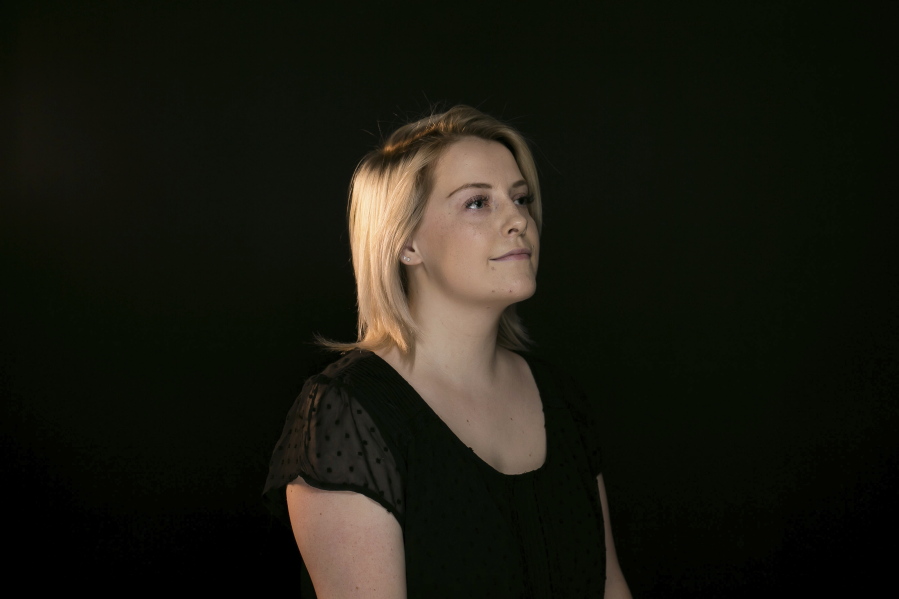YAKIMA — On June 7, 2016, Kori Haubrich thought she found a solution to the problems that had been gnawing at her for weeks.
That Monday, the Sunnyside native sat outside her Bellingham apartment struggling to figure out what she would do after graduating from Western Washington University the following year. No matter how she looked at it, she couldn’t imagine being happy.
“I felt as if whatever I was doing wasn’t enough. … I realized nothing makes me happy and no one makes me happy,” she said. “It all felt hopeless.”
That night, Haubrich tried to kill herself.
She remembers being driven to a hospital in a police car and spending most of the following day in a psychiatric ward. Later, she dropped out of school, moved home and cut off all communication with her friends at college.
Haubrich is just one person affected by a growing nationwide epidemic.
A new report from the Centers for Disease Control and Prevention shows that suicide rates increased in nearly every state from 1999 to 2016, with rates rising more than 30 percent in half the states. In central Washington, suicide rates rose 23 percent during that time. In Yakima County — where there’s been an average of 30 suicides a year since 1999 — it’s unknown how many of those people had a diagnosed mental health condition like Haubrich.
But in releasing its report — the same week fashion designer Kate Spade and celebrity chef Anthony Bourdain were found dead by suicide — CDC officials noted that 54 percent of those who died by suicide nationwide from 1999 to 2016 did not have a known diagnosed mental health condition.
However, that doesn’t mean those people didn’t have a mental health condition or weren’t experiencing symptoms, local experts say.
“If someone has a diagnosed mental health condition, that can certainly put them at heightened risk for potential suicidal behaviors or completed suicide. But that doesn’t mean those individuals who do not have a diagnosed mental health condition are at less risk,” said Courtney Hesla, an administrator at Comprehensive Healthcare, a Yakima-based nonprofit offering mental health and addiction services. “It doesn’t mean that they’re not experiencing symptoms of depression or symptoms of bipolar disorder. They just haven’t been diagnosed.”
When Haubrich, now 23, was in her late teens, she was diagnosed with depression, anxiety and obsessive-compulsive disorder. She began taking medication but stopped after two years, believing she no longer needed it. About a month later, she attempted suicide.
Facing three diagnosed mental health conditions — exacerbated without medication — and a growing sense of uncertainty about what her future held, Haubrich felt trapped.
At the time, Haubrich didn’t seek counseling because she didn’t believe it would be helpful. She saw a counselor for other issues when she was younger, but felt it didn’t solve any of her problems, and that experience made her skeptical. She also felt self-conscious about discussing private matters with a stranger and worried she might be embarrassed.
To better understand the circumstances surrounding suicide for its study, the CDC reviewed information collected by 27 states on suicides that occurred in 2015. Officials found that many suicide victims acted after relationship problems or loss; substance misuse; physical health problems; or job, money, legal or housing stress. Hesla said an unexpected crisis can leave anyone reeling, but emphasized that knowing what prevention services are available can reduce the likelihood a person may act impulsively.
The CDC urges people to be aware of the signs of someone contemplating suicide, and said family members and friends can be integral in saving lives.
Two years after her attempt, Haubrich calls herself a survivor. She’s back on medication, plans to finish her creative writing degree, has taken steps toward seeing a counselor and — despite initially feeling ashamed and embarrassed — is open about her struggles with mental health and suicidal thoughts.
“It made me put life into perspective in a sense, getting so close to ending it but coming out the other end still being here. It almost feels like a second chance,” she said.
To make the most of that second chance, Haubrich said she’s going to continue to be a vocal advocate for those struggling with mental illness.
“By talking about it, we can get rid of the stigma against mental health issues,” she said. “I feel like realizing that I can help people with my own story … kind of gives me a purpose, which I never really thought I had before.”



